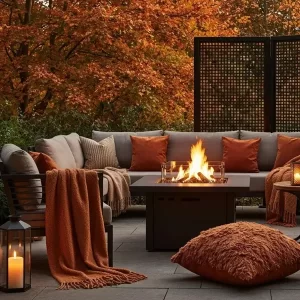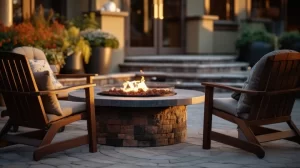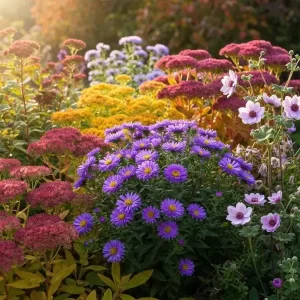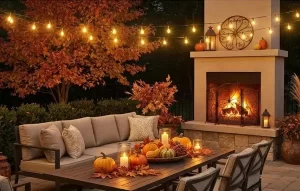Designing a front yard with limited space is both a challenge and an opportunity. While smaller yards can feel restrictive, they also inspire creativity and innovative design approaches that make the most of every inch. With thoughtful planning and imaginative ideas, even the tiniest areas can become a welcoming, beautiful, and highly functional landscape design for front yard that boosts curb appeal and creates an inviting outdoor space for daily enjoyment.
One of the key advantages of working with a compact front yard is the ability to focus on detail and intentional design. Every plant, pathway, and decorative element must be carefully chosen and positioned to serve a purpose, whether it’s to create visual interest, define a walkway, or provide privacy.
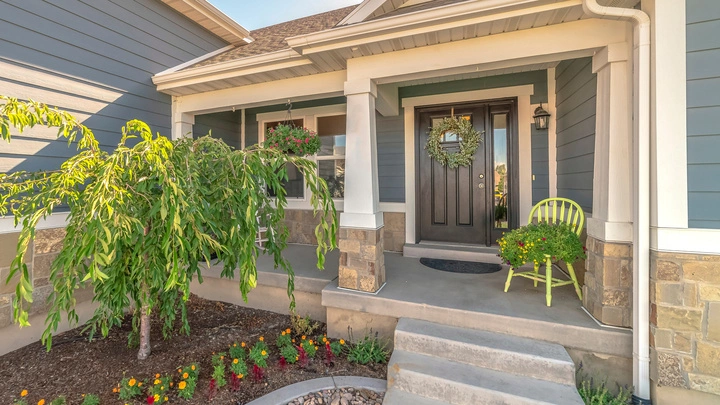
By integrating multi-functional features such as vertical gardens, raised planting beds, and efficient lighting, small front yards can feel larger and more dynamic than their dimensions suggest. Thoughtful use of textures, colors, and layering also adds depth and richness without overwhelming the space.
This comprehensive guide explores essential strategies, smart plant choices, and core design principles that will empower you to unlock the full potential of your limited front yard. Whether you’re aiming for a minimalist look, a lush garden oasis, or a charming, welcoming entryway, these practical tips and creative ideas will help you craft a stunning landscape that complements your home and lifestyle. With the right approach, a small front yard becomes not just a challenge to overcome, but a unique canvas to express your personal style and make a lasting impression.
Understanding the Challenges of Landscape Design for Front Yard Spaces
Small front yards require a different design approach than larger landscapes. The limited space means every element must serve a purpose, and clutter can quickly overwhelm the area. The goal is to maximize both beauty and utility while making the space feel larger than it is.
1. Start with a Plan
Before planting or purchasing materials, take time to analyze your space:
- Measure the Yard: Note the exact dimensions and consider existing features like walkways, trees, and utilities.
- Assess Sun and Shade: Observe how sunlight moves across the yard. South- and west-facing yards get more sun, while north- and east-facing ones are cooler and shadier.
- Identify Focal Points: Decide what you want to highlight—your front door, a beautiful window, or a feature plant.
- Consider Function: Will you need space for parking, sitting, or just walking to the door?
A clear plan helps prevent overcrowding and ensures every element has a place and purpose, laying the foundation for a thoughtful landscape design for front yard spaces.
2. Design Principles for Small Spaces
A. Create the Illusion of Space
Several design tricks in a well-planned landscape design for front yard can make a small yard feel larger:
- Vertical Gardening: Use trellises, wall planters, or climbing plants to draw the eye upward and save ground space.
- Layering: Plant in levels—tallest at the back, medium in the middle, and shortest in front—to add depth and richness.
- Curved Pathways: Gentle curves in walkways or beds create a sense of movement and expand the visual field.
- Mirrors: Strategically placed mirrors can visually double the space, especially when framed by greenery.
- Horizontal Elements: Use horizontal lines, such as low fences or decking, to make the yard appear wider.
- Stepped Levels: Small steps or raised beds add dimension and make the yard feel more expansive.
B. Keep It Simple and Cohesive
- Unified Color Scheme: Stick to a limited palette for plants, hardscaping, and accessories to avoid visual clutter.
- Minimal Lawn: Lawns can make small spaces feel even smaller; consider replacing some grass with plant beds, gravel, or paving.
- Defined Edges: Use borders, edging, or different materials to clearly define spaces and add structure.
3. Plant Selection for Small Front Yards
Choosing the right plants is crucial. In any thoughtful landscape design for front yard, it’s important to opt for varieties that offer year-round interest, are suitable for your climate, and won’t outgrow their space.
A. Native and Low-Maintenance Plants
- Native Plants: These are adapted to your region, require less water, and support local wildlife.
- Low-Maintenance Choices: Look for plants that don’t need constant pruning or special care.
B. Plant Combinations for Impact
- Structural Shrubs: Compact evergreens like Choisya ternata or yew (Taxus baccata ‘Fastigiata Aureomarginata’) provide year-round structure.
- Flowering Perennials: Plants like Astrantia major ‘Hadspen Blood’, hardy geraniums, and lavender add color without taking up much space.
- Ornamental Grasses: Stipa tenuissima and similar grasses add movement and texture.
- Climbers: Wisteria, honeysuckle, or clematis can cover walls or fences, maximizing vertical space.
C. Container and Raised Bed Planting
- Containers: Use pots and planters for flexibility and to add height. Choose upright containers for tight spots.
- Raised Beds: These add levels, improve drainage, and make maintenance easier.
4. Hardscaping and Functional Features
Hardscaping plays a major role in creating balance and usability. In a well-planned landscape design for front yard, features like walkways, seating areas, and lighting not only improve function but also enhance the overall look and feel of the space.
A. Walkways and Paths
- Curved or Diagonal Paths: These make the journey to your door more interesting and visually expand the space.
- Distinct Materials: Use contrasting pavers, gravel, or stepping stones to define pathways.
B. Multi-Functional Elements
- Benches with Planters: Combine seating and planting to save space.
- Pergolas and Arbors: Support climbing plants and create a welcoming entrance, even in a small area.
- Lighting: Well-placed lights add depth and safety, making the yard inviting after dark.
5. Maximizing Curb Appeal
Small yards can have a big impact with the right touches. A thoughtful landscape design for front yard spaces can highlight your home’s best features while creating an inviting first impression.
- Symmetry vs. Asymmetry: Symmetrical designs feel formal and balanced; asymmetrical layouts are more relaxed and natural.
- Focal Points: A striking plant, water feature, or piece of art draws the eye and anchors the design.
- Seasonal Interest: Choose plants that offer blooms, berries, or color at different times for year-round appeal.
6. Practical Tips and Creative Ideas
Simple additions can make a big difference in how your yard feels and functions. By applying these ideas within a thoughtful landscape design for front yard, you can maximize beauty while making the most of limited space.
- Railing Boxes and Hanging Baskets: Add color and greenery without using ground space.
- Narrow Beds: Plant along walkways or fences to maximize planting area without encroaching on paths.
- Mirrors and Decorative Panels: Reflect light and greenery to make the yard feel larger.
- Keep It Tidy: Clutter quickly overwhelms small spaces. Regularly prune, weed, and edit plantings for a clean look.
- Personal Touches: Add a wind chime, a small sculpture, or a pair of chairs to make the space feel welcoming.
7. Common Mistakes to Avoid
Even a well-planned landscape design for front yard can fall short if certain mistakes are made. Keep these pitfalls in mind to maintain balance and beauty:
- Overplanting: Too many plants make the space feel cramped.
- Ignoring Scale: Choose plants and features proportionate to the yard’s size.
- Neglecting Maintenance: Small yards require regular upkeep to stay tidy and attractive.
- Lack of Cohesion: Mixing too many styles or colors can create chaos.
8. Inspiration and Resources
Finding creative ideas can greatly enhance your landscape design for front yard. Explore these resources to spark inspiration and guide your planning:
- Browse platforms like Pinterest for visual inspiration and creative layouts.
- Watch expert videos for step-by-step guidance and real-world examples.
- Consult local nurseries for plant recommendations suited to your climate.
Conclusion: Transforming Your Landscape Design for Front Yard
A limited front yard doesn’t mean limited potential. By combining smart planning, creative design techniques, and the right plant choices, you can craft a landscape design for front yard that feels spacious, welcoming, and uniquely yours. Focus on quality over quantity, use every inch intentionally, and let your personality shine through thoughtful details. With these strategies, your small front yard can make a big impression—on you, your guests, and your neighborhood.
If you’re ready to transform your compact front yard into a stunning landscape, Hawkins Landscaping Inc. is here to help. Serving Frederick County and the surrounding areas, Hawkins Landscaping brings years of experience and a passion for creative, tailored landscape design. Whether it’s incorporating beautiful plant selections, designing functional hardscaping, or adding charming features like walkways and lighting, Hawkins Landscaping Inc. provides comprehensive solutions that maximize your outdoor space. Their expert team works closely with you to understand your vision and deliver a front yard that enhances your home’s curb appeal while staying practical and easy to maintain.
Don’t settle for less when it comes to your outdoor space. Contact Hawkins Landscaping Inc. today at (301) 898-3615 or visit www.hawkinslandscaping.com to take the first step toward creating a front yard that is both beautiful and functional. Experience the difference that professional design and personalized service can make — let Hawkins Landscaping turn your small yard into a big statement.

